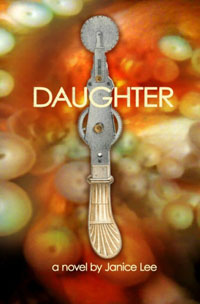TWO OR THREE WAYS TO RESURRECT PHILIP K. DICK
 Philip K. Dick: Remembering Firebright
Philip K. Dick: Remembering Firebright
by Tessa B. Dick
CreateSpace, March, 2009 & 2010
228 pages / $15.77 Buy from Amazon
&
Daughter
by Janice Lee
Jaded Ibis Press, 2011
144 pages / Color Ed. $39 Buy from Amazon or Jaded Ibis
B/W Ed. forthcoming Summer 2012
The last thing Philip K. Dick’s work needs is another philosopher’s commentary. After Fredric Jameson’s “synoptic” reading of Dick’s corpus and Laurence A. Rickels’ 400-plus page I Think I Am: Philip K. Dick, it might seem prudent, indeed respectful, to refrain from any further philosophical discussion of PKD. However, after spending some time with Tessa B. Dick’s “memoir” and Janice Lee’s “novel,” I am inclined to discuss a dimension of Dick’s that neither Jameson nor Rickels were able to deal with in their commentaries: namely, the particularly contemporary problem of living without myth. Anthropology tells us that peoples of the past actually believed in their myths; a mythological framework provided by the gods presumably told you how to lead your life and what your ultimate place in the universe was. Now that all of our myths have been more or less discredited by the advent of modernity, how might a viable contemporary myth cope with the disintegrating social edifice and the resulting modern subject who minimally experiences the “death of God”?
We’ll start with a strident way in – that of Daughter’s vision of “the head of a human figure with a terrifying face, full of wrath and threats” appearing to the protagonist “in the sky, on a night when the stars were shining and she stood in prayer and contemplation.” These two elements – the terrifying face of the big Other, and the lost subject in search of meaning and the miraculous – are constants in Philip K. Dick’s biography. In the late seventies, Dick recalled: “There I went, one day [in 1963], walking down the country road to my shack, looking forward to eight hours of writing, in total isolation from all other humans, and I looked up in the sky and saw a face. . . . and it was not a human face; it was a vast visage of perfect evil.” To the psychological impact of such an encounter, Janice Lee supplies a concrete example: “At the sight of it, she feared that her heart would burst into little pieces. Therefore, overcome with terror, she instantly turned her face away and fell to the ground. And that was the reason why her face was not terrible to others.”
April 30th, 2012 / 12:00 pm
